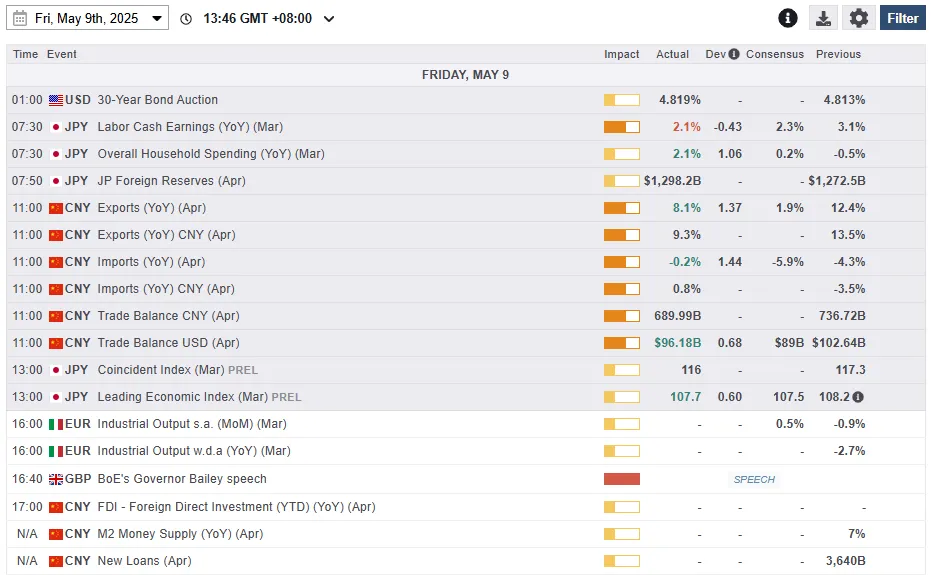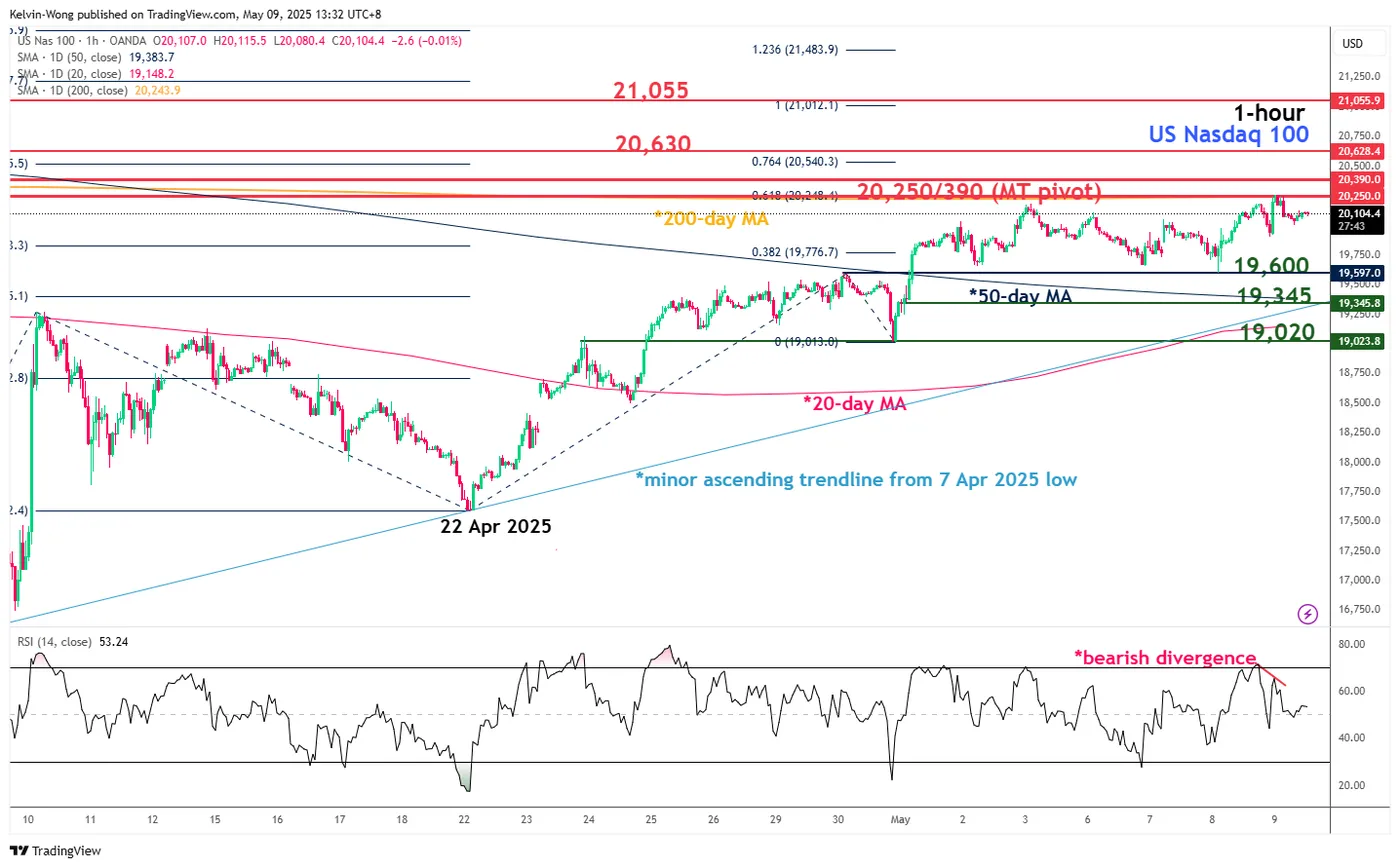FTSE 100 today: Edges higher as pound slips; Mitchells & Butlers jumps on results
US President Trump reignited risk-on sentiment across global markets on 8 May, coinciding with the announcement of a US–UK trade deal framework. During a White House press Q&A, he hinted at the possibility of lowering China tariffs if upcoming trade talks in Switzerland go well. He added, “You better go out and buy stock now,” echoing a similar statement from 9 April: “This is a great time to buy.”
US equities surged on the remarks, led by mega-cap tech and small-cap stocks. The Nasdaq 100 gained 1.9%, and the Russell 2000 jumped 2.5% intraday. However, a wave of late-session profit-taking trimmed gains, with the S&P 500 ending up 0.6%, down from an earlier 1.6% rise.
The renewed risk appetite also buoyed the US dollar. The US Dollar Index (DXY) rose 0.8%, climbing above its 20-day moving average, and extended its gains by another 0.2% in the current Asian session.
Safe-haven demand weakened, with gold (XAU/USD) falling for the second straight session, closing down 1.7% in the US. In today’s Asian trade, it initially dropped a further 0.9% to an intraday low of $3,275 but has since reversed course to post a 0.4% gain at the time of writing.
Asian equity markets opened mixed. Japan’s Nikkei 225 advanced 1.5%, Hong Kong’s Hang Seng Index posted a modest 0.2% gain, while China’s CSI 300 slipped 0.2%.
Economic Data Releases

Source: MarketPulse
Fig 1: Key data for today’s Asian mid-session
Chart of the Day – Nasdaq 100 Bulls May Face a Roadblock at the Key 200-day MA
Source: TradingView
Fig 2: US Nasdaq 100 CFD Index minor trend as of 9 May 2025
Yesterday’s intraday swift rally on the US Nasdaq100 CFD Index (a proxy of the Nasdaq 100 E-mini futures), ex-post US President Trump’s “you better go out and buy stock now” remark, has now started to display signs of fatigue right below its key 200-day moving average.
The hourly RSI momentum indicator has flashed out a bearish divergence condition at its overbought region, which suggests yesterday’s US session bullish momentum has waned.
Watch the 20,250/390 medium-term pivotal resistance on the US Nasdaq100 CFD Index for a potential minor slide to expose near-term support of 19,600, and a break below it may expose the next intermediate supports at 19,345 and 19,020 (see Fig 2).
However, a clearance above 20,390 invalidates the bearish scenario for a further potential recovery towards the next intermediate resistances at 20,630 and 21,055.
